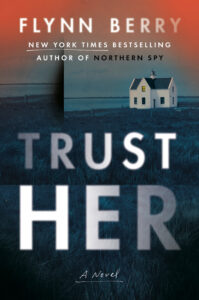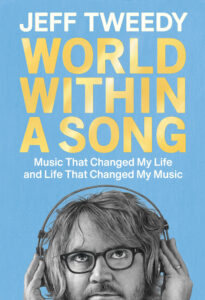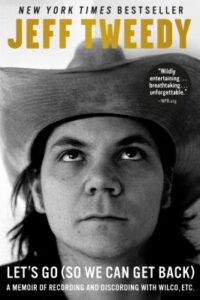Reader’s Notebook, 9/19/24

Trust Her – Flynn Berry
Three years ago I read Berry’s A Northern Spy, about an unaffiliated Northern Irish woman, Tessa, who gets pulled into the conflict between the IRA and British authorities because of her sister.
In this follow up, set a few years later, the siblings are settled in Dublin where they have carved out new lives with new identities. Until the IRA finds Tessa and threatens her family unless she attempts to turn the British agent she worked for when she was still in the North.
Much of the book progresses without much happening, just the slow building of pressure on Tessa. I wondered if Berry was making a statement more about the stresses people involved in the conflict lived with rather than writing a more straight-forward thriller. Then she threw a couple twists into the final fifth or so of the book that picked up the pace and gave it a more traditional feel.
I guess that ending was needed. After finishing I wondered if a book with a messier, open ending would have been more effective. I liked the idea of nothing ever truly being resolved during The Troubles. Each kidnapping and bombing and death led to another, then another. Each time the situation around you calmed down, there was sure to be some retaliatory act that would ratchet events back up again.

Eye of the Needle – Ken Follett
I remember seeing this book a lot as a kid, but never read it until now, after finding it on a list of best espionage novels ever written. After finishing it, hard to believe I put it off so long.
Set during World War II, it is the twin tale of a German spy embedded in Britain and the agents tasked with tracking him down. The chase picks up steam in the weeks before D-Day, when the spy discovers the true location of the Allied landing and attempts to get photographic evidence back to his superiors in Germany. There’s a rather unlikely but entertaining climax to his efforts in which a regular citizen is responsible for his failure. The entire plot is a bit by-the-numbers, but it is always entertaining, and ultimately works.
As the book was written in 1978 and set in the 1940s, I wondered if it would feel a bit off in tone. With the exception of a couple brief passages, which I think were reflective of how people would have talked during the war, I was surprised that the book did not feel out-of-date or fashion at all.

World Within A Song – Jeff Tweedy

Let’s Go (So We Can Get Back) – Jeff Tweedy
I’ve been a casual fan of Wilco, with occasional moments of greater interest, for a little over 20 years. I am most fond of the music they made from 1999 to 2004; hot-and-cold with them at other times.
When we had friends over a few weeks ago, I talked books with one guest. He asked if I had ever read any of Jeff Tweedy’s books. When I said no, he said he bet I would enjoy them, no matter how much I listened to Wilco’s music. He had just read World Within A Song and suggested I start there.
So I did, and read it in two days. And immediately got Tweedy’s proper memoir and read it in two days. Dude can write more than a good song.
World Within A Song is a list of both songs that have influenced him, for better or worse, over his life and little snippets of observations about touring or life. It was not what I was expecting. He is all over the place in his song choices. He writes about music from artists like The Minutemen, The Clash, Bob Dylan, The Replacements, etc that he loves and influenced what he wrote. He also includes tracks from artists like Leo Sayer and Judy Garland that bring back memories of his parents. And traditional stuff like “The Star Spangled Banner” and “Happy Birthday,” songs we have all heard a million times in our lives that he kind of hates.
Let’s Go (So We Can Get Back) is a straight autobiography, beginning with his childhood. He covers his discovery of music both as a listener and artist; his days in Uncle Tupelo and how he and Jay Farrar grew apart; the formation of Wilco, the addition and later firing of Jay Bennett from that band, and Wilco eventually leaving the major label world; his opioid addiction and recovery; how he met his wife, her cancer battles, and how they started a family; the deaths of his parents; and his fights with the recording industry. Pretty much everything. You always question how honest and accurate books like these truly are, but this seems like a warts-and-all accounting. I’m not sure if Farrar, Bennett’s family, or some of the other people Tweedy had conflicts with would agree with everything. But a book like this can only have one perspective.
What made me read these both in four days is that Tweedy is a terrific writer. Funny, eloquent, and open. He shares some pretty horrific, cruel stuff he did in his years as an addict without much filter. He doesn’t mince many words when he discusses his conflicts with Farrar and Bennett. You don’t necessarily admire him for every step he’s taken in his career, but you understand the bigger context they came in. He also gets deep into how he makes music and how that has changed over his career. Wilco has taken many hard left turns over their 30-years together. The songs covered in World Within A Song and events in Let’s Go (So We Can Get Back) help those diversions make a lot more sense.